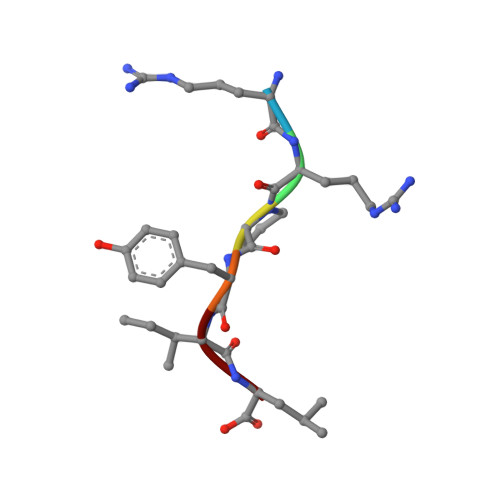Structure and dynamics of a constitutively active neurotensin receptor.
Krumm, B.E., Lee, S., Bhattacharya, S., Botos, I., White, C.F., Du, H., Vaidehi, N., Grisshammer, R.(2016) Sci Rep 6: 38564-38564
- PubMed: 27924846
- DOI: https://doi.org/10.1038/srep38564
- Primary Citation of Related Structures:
5T04 - PubMed Abstract:
Many G protein-coupled receptors show constitutive activity, resulting in the production of a second messenger in the absence of an agonist; and naturally occurring constitutively active mutations in receptors have been implicated in diseases. To gain insight into mechanistic aspects of constitutive activity, we report here the 3.3 Å crystal structure of a constitutively active, agonist-bound neurotensin receptor (NTSR1) and molecular dynamics simulations of agonist-occupied and ligand-free receptor. Comparison with the structure of a NTSR1 variant that has little constitutive activity reveals uncoupling of the ligand-binding domain from conserved connector residues, that effect conformational changes during GPCR activation. Furthermore, molecular dynamics simulations show strong contacts between connector residue side chains and increased flexibility at the intracellular receptor face as features that coincide with robust signalling in cells. The loss of correlation between the binding pocket and conserved connector residues, combined with altered receptor dynamics, possibly explains the reduced neurotensin efficacy in the constitutively active NTSR1 and a facilitated initial engagement with G protein in the absence of agonist.
Organizational Affiliation:
Membrane Protein Structure Function Unit, National Institute of Neurological Disorders and Stroke, National Institutes of Health, Department of Health and Human Services, Rockville, Maryland 20852, United States.


















